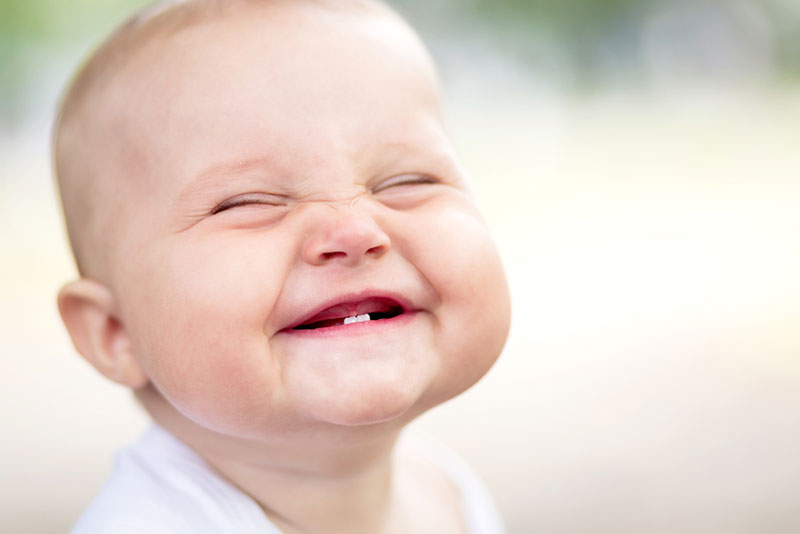
Tongue Thrust
All babies have a tongue thrust or reverse swallow when they are younger. When a baby swallows, his tongue pushes forward toward his gums or front teeth. When a baby is being feed pureed food, his tongue pushes forward while pushing some of the food back out of his mouth. The adult scoops the food off of his lips and puts it back in his mouth. The cycle continues on and on until all of the food is gone. As babies grow older and more mature, they will learn how to swallow with their lips closed and how to move the food back towards the throat with a mature swallow.
In a mature swallow, the tip of the tongue is held on the alveolar ridge behind the front, top teeth. The tongue also moves the food backward with a rolling motion. When children reach the age of seven, they should have the adult, mature swallow taken down pat.
However, some children have a hard time mastering this swallow after the age of seven. When this occurs, usually the teeth are slightly separated; the child’s lips are tightly closed to prevent the tongue from protruding and the tongue presses against his front teeth. Also, children that have tongue-thrusting issues are known to be mouth breathers because of allergies or enlarged tonsils. This causes the tongue to sit between the front teeth at rest. When they swallow, the tongue pushes forward into the teeth.
So, what are some signs that your child is a tongue thruster? As discussed above, if your child breathes with his mouth or keeps his tongue between his front teeth at rest, he may be a tongue thruster. Also, have him take a sip of water and watch how he swallows. When he swallows, try to pull his lips apart. There should be no forward movement of his tongue. Generally speaking, a child with a tongue thrust would not be able to swallow with his lips parted.
Having a tongue thrust can negatively impact your children’s health. It is important to notice whether your child has one or not because if it is not fixed, then bigger issues can occur.

